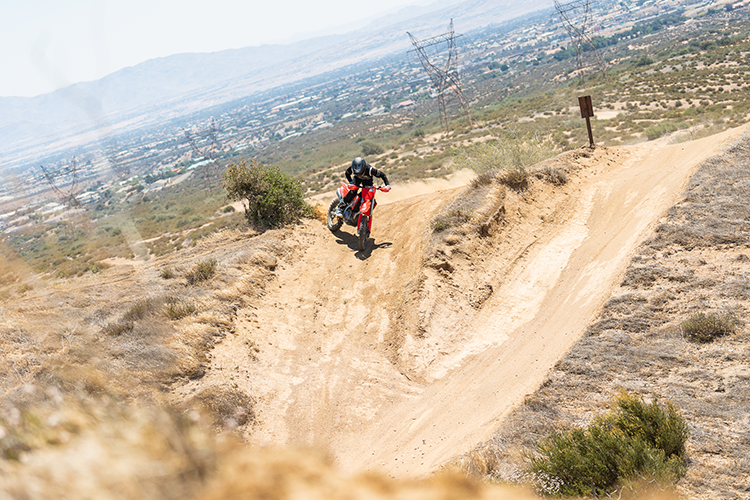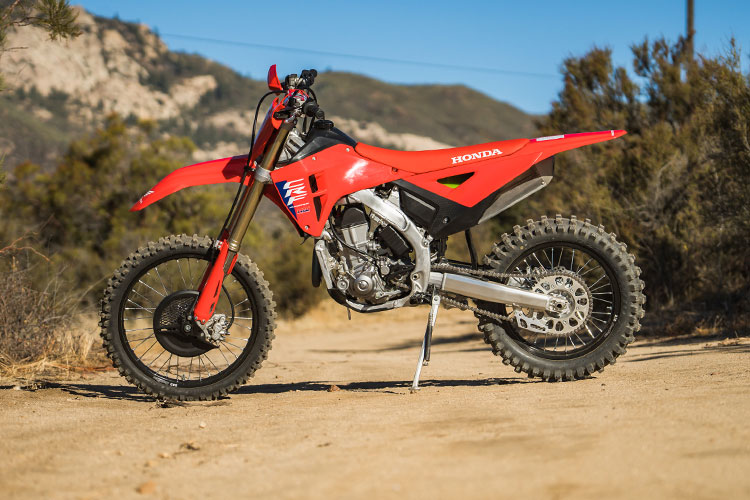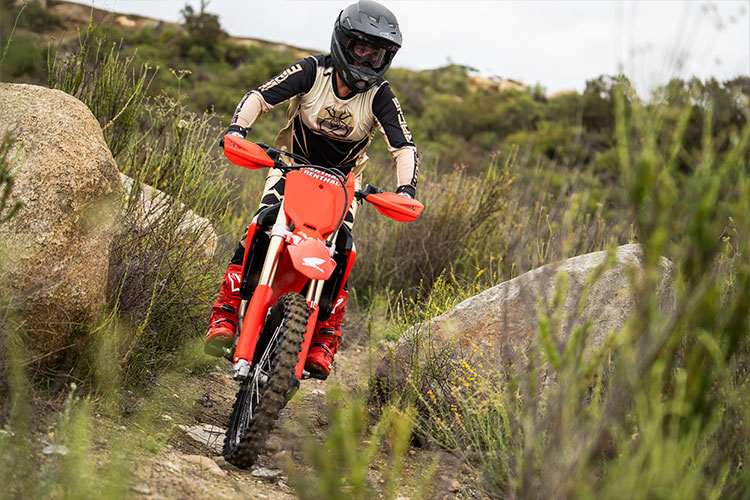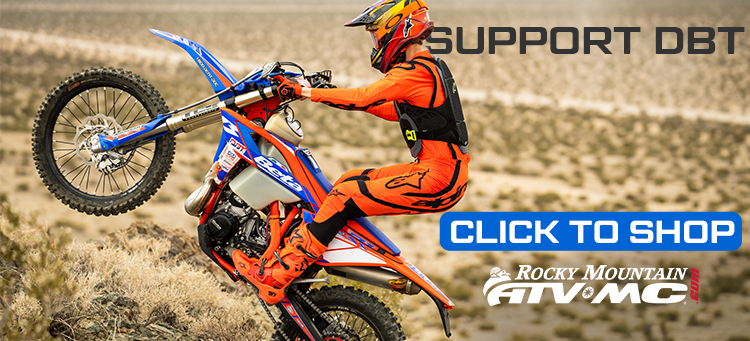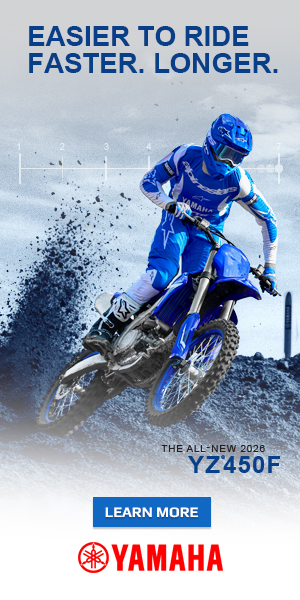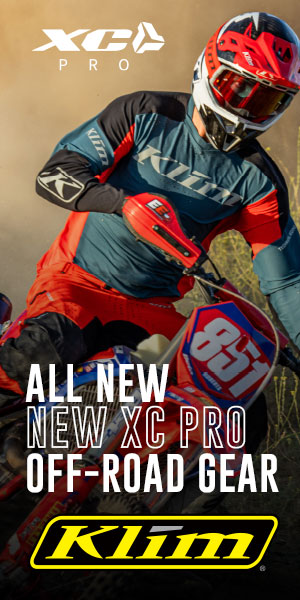Bloods vs Crips
Story and Photos by Trevor Hunter
Yamaha’s YZ450FX has been one of our top 450 off-road racers for quite a few years now and the current bike is in its second model year of the generation. Meanwhile, Honda unveiled a heavily updated CRF450RX for 2025 with a 70% new chassis, suspension updates, and some engine tweaks. We’ve been impressed with how much improved the Honda feels and felt the need to compare it to one of our top bikes in the class. Without further adieu, lets compare the Honda and Yamaha flagship off-road race models!
 The YZ is known for a powerful engine and good suspension, but the newest chassis has some pros and cons to it compared to the old one. It lost some of its bump comfort and stability, but made huge strides in cornering, agility, and precision. The Yamaha features a semi-wide ratio 5-speed gearbox, along with the standard o-ring chain, 18 in rear wheel, larger fuel tank, skid plate, off-road suspension settings and mapping, and a kickstand.
The YZ is known for a powerful engine and good suspension, but the newest chassis has some pros and cons to it compared to the old one. It lost some of its bump comfort and stability, but made huge strides in cornering, agility, and precision. The Yamaha features a semi-wide ratio 5-speed gearbox, along with the standard o-ring chain, 18 in rear wheel, larger fuel tank, skid plate, off-road suspension settings and mapping, and a kickstand.
The Honda was previously plagued by a chassis that didn’t agree with our testers, but the new and improved chassis has so far proven to be less sensitive and more versatile in an off-road setting. The engine has always been good and the Showa suspension is very capable. The Honda sees a large tank, an 18 in rear wheel, o-ring chain, off-road suspension settings, a kickstand, and handguards stock to make it an off-road racer.
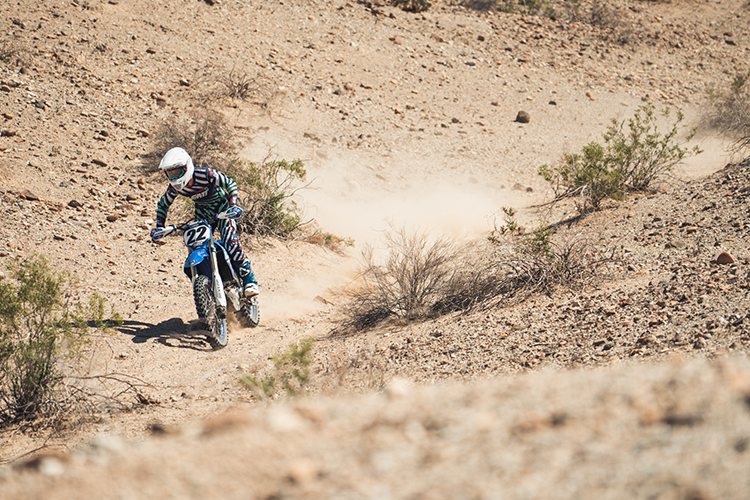 Starting with the engine, the Yamaha is a horsepower monster. It makes as much power as most people could want, and sometimes more than you need. Yet with all that power, Yamaha has refined it to be very rideable and controllable for an off-road bike. As the speeds slow and the technicality increases, the power becomes more apparent and over bearing at times. However, the free GYTR Power Tuner App allows you to change the power delivery and change it substantially in a matter of seconds without spending a dime. One of the most important aspects of the Yamaha is the engine character as it drastically affects how riders perceive the bike. Riders who struggle with the Yamaha almost always come around to liking it or even loving it after they find a map that they like. It has big implications on how the bike handles and is paramount to getting the most out of your YZ.
Starting with the engine, the Yamaha is a horsepower monster. It makes as much power as most people could want, and sometimes more than you need. Yet with all that power, Yamaha has refined it to be very rideable and controllable for an off-road bike. As the speeds slow and the technicality increases, the power becomes more apparent and over bearing at times. However, the free GYTR Power Tuner App allows you to change the power delivery and change it substantially in a matter of seconds without spending a dime. One of the most important aspects of the Yamaha is the engine character as it drastically affects how riders perceive the bike. Riders who struggle with the Yamaha almost always come around to liking it or even loving it after they find a map that they like. It has big implications on how the bike handles and is paramount to getting the most out of your YZ.
On the other hand, the CRF is sneaky good in the engine department. We don’t give it enough credit for its motor, but it too is very powerful yet very rideable. The power is put to the ground in a smooth delivery with a free-er revving spool up than before. It packs torque and can chug at lower RPMs or be ridden aggressively and isn’t as prone to getting away from you. The mapping isn’t as rider friendly as the Yamaha as there are only three pre-programmed maps and three levels of traction control and it’s very difficult to change “on-the-fly” unlike the Yamaha. Still, it is nice to have and each map has its place.
The cable vs hydro clutch is very much a rider preference thing and we don’t have a uniform answer on what’s liked best. The semi-wide ration 5-speed gearbox works well in an off-road setting on the Yamaha, having a gear for every situation. The Honda motocross gearbox isn’t as versatile as we run out of top end gear but also don’t have that low first gear when it gets tight. This can be changed with gearing, but you don’t always have a gear for every situation. Additionally, the Honda is slightly tougher to shift in comparison to the buttery smooth Yamaha.
The suspension on the Yamaha is agressive. There’s very good hold up, it rides higher in the stroke, and it lends itself to be very playful and agile. However, it’s on the stiffer side for the average rider in a true off-road setting. Initially, we’d like for improved bump comfort and compliance in small chop, rocks, roots, etc. However, it is a high performance setting and has a lot of good traits for west coast off-road in particular. The KYB components are some of the best and some slight tuning might be all you need to find that extra comfort on the trail.
On the other hand, the Honda employs a softer setting that’s more suited to a GNCC/hare scramble type arena. It’s very active and moves through the stroke, often getting deep on bigger hits and under high loads. But it is very supple and soaks up the small stuff with ease. Our heavier riders preferred the YZ suspension as it offers better hold up and rides higher in the stroke, but the Honda has a lot of promise for <180 lb riders.
 The Yamaha chassis is very nimble feeling and together with the power delivery and suspension setup, the bike feels very light and agile despite its scale weight not being the lightest in class. The YZ has turning capabilities like never before and is quicker and easier to throw around. With that, the bike has lost some of its bump absoprtion and high speed stability. You feel a little more of the terrain underneath you through both the front and back of the motorcycle. We’ve found this can be tuned out with some engine mount modifications, but in a stock setting, it’s there. Additionally, there is more fore and aft movement in the chassis in higher speed, rough terrain. Nothing unbearable, but more present than the past generation bike. With all of this, the YZ has poven to be more universally liked and more adaptable than the old platform which is a huge positive.
The Yamaha chassis is very nimble feeling and together with the power delivery and suspension setup, the bike feels very light and agile despite its scale weight not being the lightest in class. The YZ has turning capabilities like never before and is quicker and easier to throw around. With that, the bike has lost some of its bump absoprtion and high speed stability. You feel a little more of the terrain underneath you through both the front and back of the motorcycle. We’ve found this can be tuned out with some engine mount modifications, but in a stock setting, it’s there. Additionally, there is more fore and aft movement in the chassis in higher speed, rough terrain. Nothing unbearable, but more present than the past generation bike. With all of this, the YZ has poven to be more universally liked and more adaptable than the old platform which is a huge positive.
The CRF chassis is drastically improved. We really struggled to find any consistency in the old chassis and when the conditions weren’t optimal, the weaknesses in the chassis were exploited. We now find ourselves knowing where the front end is and where it’s going and having a sense of calmness about the chassis. Additionally, small changes aren’t making as drastic change in feel which makes it easier to setup and have a larger window of working well. The bike still corners well, something the Honda has done for years, but it’s added much more stability at speed.
Both bikes are very good and offer a different flavor. In stock trim, the Honda is a smoother, calmer machine overall with a slightly mellower engine, softer suspension, and a calmer chassis feel. The Yamaha offers a fast but tunable engine, stiffer suspension, and a nimble chassis. The ergonomics on the Honda are universally praised by everyone, whereas the Yamaha still isn’t perfect for all of our testers. We’ll be putting both bikes through the paces to see if/where we can make improvements from stock and build these bikes into lethal weapons.
